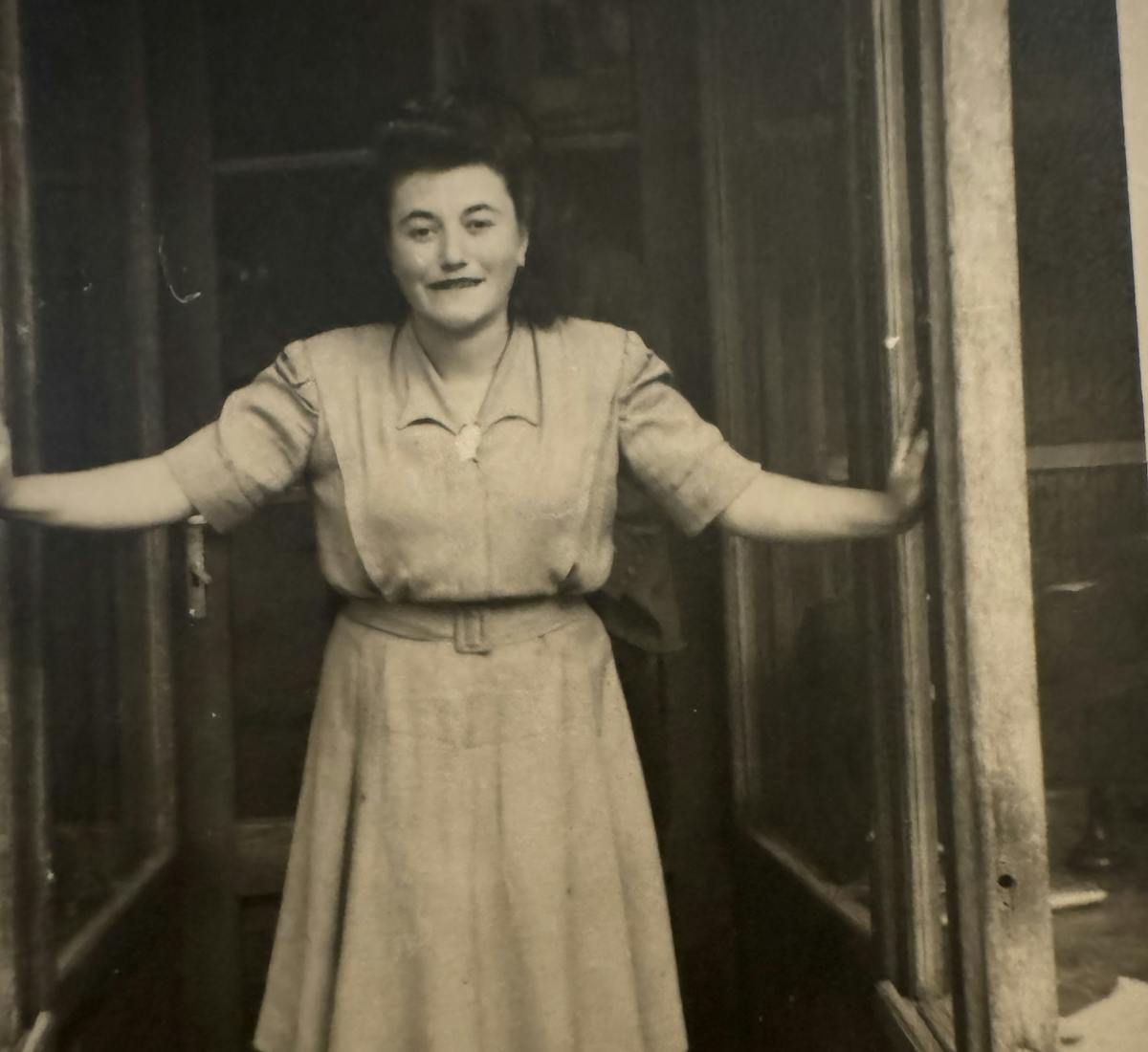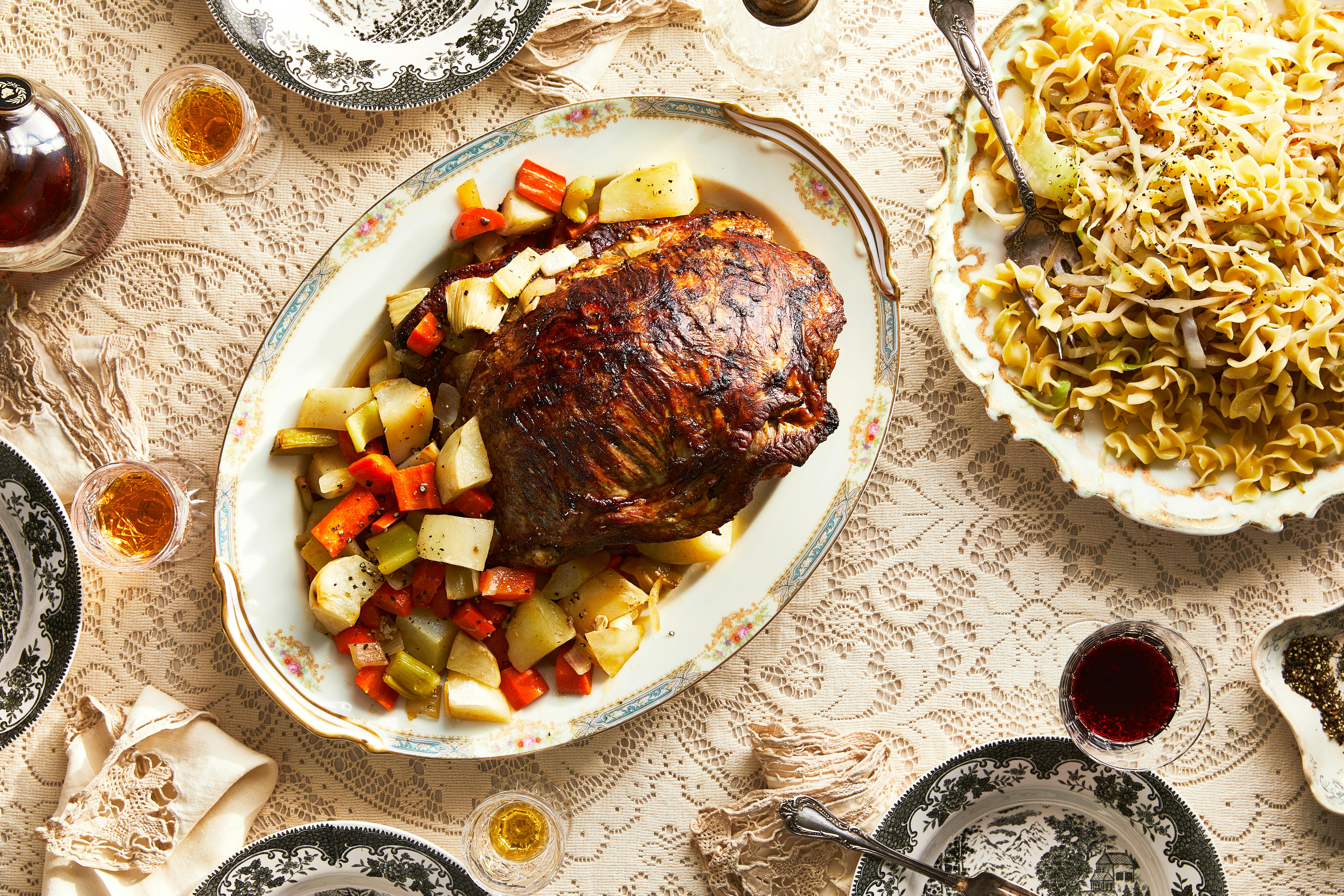Shared by Donna Steinhorn

During Donna Steinhorn’s childhood in Queens, the Holocaust was never discussed with her, but it was always there. Both of her parents were Czechoslovakian survivors of Auschwitz and when their friends came over, they would share stories and memories of the war. “I would listen at the top of the stairs or from behind a door,” Donna says. “I heard more than a little girl should have.” There were other signs of the war in their home, like a perennially overflowing pantry and the loaf of bread her father Paul kept next to his bed so he would never go hungry.
“When I knew enough to say: ‘How did you survive? Why did you survive?’” she says, her parents told her that they survived to have her. “I took that to mean that I was responsible for their happiness. Every decision I made was based on whether it would make them happy or unhappy.”
Donna’s father never spoke about how long he was at Auschwitz, but over the years, Donna’s mother Magdalena (who was known as Magda) started to reluctantly share fragments of her experiences during the war. She was part of the first official Jewish transport to Auschwitz, which is memorialized in “999: The Extraordinary Young Women of the First Official Jewish Transport to Auschwitz.” Taken when she was only 15, she survived three and a half years in the camp.
One of the few stories Magdalena told Donna of life during the war was about how the girls in her barrack would plan dinner parties and menus aloud. “If it was a holiday, they would talk about what they would serve,” Donna adds. “It was a survival instinct in the camps” — including Auschwitz, Ravensbrück, and Buchenwald.
Before the war, Magdalena knew very little about cooking, in part, because she attended a boarding school. Growing up, Donna recalls helping her mom recreate recipes she remembered from Czechoslovakia like the caramelized cabbage tossed with pasta Magdalena learned from her mother, Ludmilla. Magdalena also acquired recipes from her sister-in-law Blanche like one for strapačky — a free form dumpling similar to spaetzle and gnocchi that the family served with fresh cheese, caramelized onions, or with sugar for dessert.
Cooking wasn’t her mother’s forte, Donna concedes, but her father was a kosher butcher in Queens and an amazing cook. “So between the two of them we ate really well,” Donna says. To serve alongside his wife’s cabbage on Shabbat, Paul made veal breast stuffed with challah.
In 2016, Donna founded the Facebook group Cookbook for Children of Holocaust Survivors: Foods of Our Heritage to preserve recipes from descendents of survivors like herself. And for most of the group’s existence, she has maintained a strict policy that only posts related to food and recipes are allowed. “We need a safe space to just talk about food,” she says, and not the Holocaust. “Here was a place we could be together, but not have to talk about the things that traumatized us. Food was a common language.”
But following October 7, 2023, the posts in the group changed temporarily. “If you’re Jewish, you can’t ignore this, you can’t just talk about food, so I opened it up — it [gave members] a space to share their fears,” she says. In her personal life, she reached out to her cousins for the first time to talk about the Holocaust. And even though both of her parents have passed away, she and some of her cousins struggled to discuss the war.
To find comfort in these times, she returns to their recipes — especially the cabbage with noodles and the strapačky. “I find myself doing it on days that I'm really stressed,” she says.
You can find more recipes from survivors and their families in our collection Recipes From the Kitchens of Holocaust Survivors.
